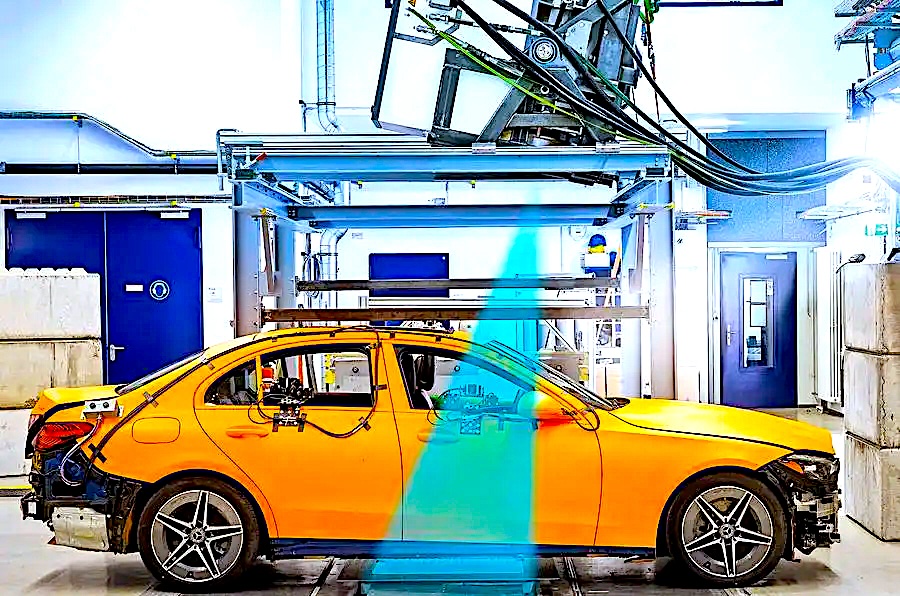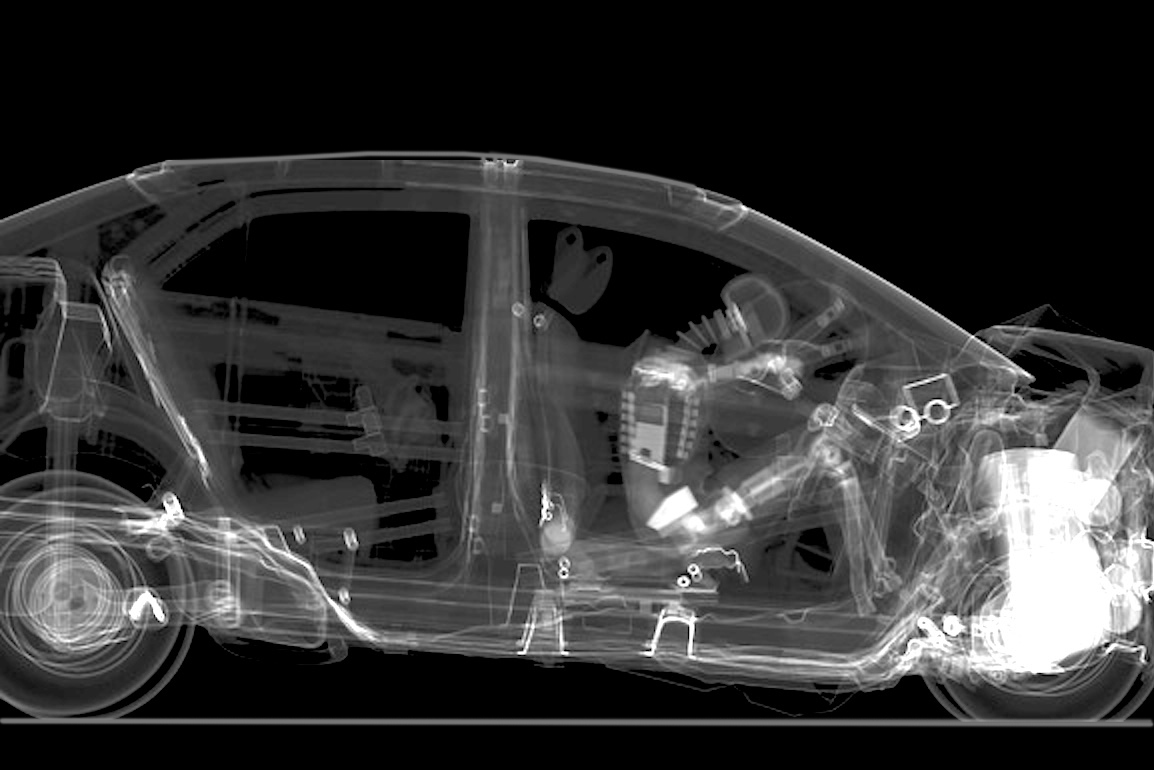New Mercedes X-Ray Revolutionizes Car Crash Testing
Mercedes-Benz has once again taken the lead in car safety with latest X-ray crash tests at the moment of impact.
Crashing a car is a horrible business. Which is why the likes of Mercedes-Benz spend millions to ensure that more auto accidents become survivable in time. It’s a never-ending process, as carmakers search for better ways to protect the occupants in a car in the unfortunate event of a wreck.
Now Mercedes-Benz has once again taken the lead in car safety. Its latest measure promises to revolutionise how we look at car crashes in future. Benz is the first carmaker to X-ray crash tests at the moment of impact. The new crash test X-ray makes its images using a high frequency kilohertz linear accelerator.
Mercedes’ first X-ray tests were carried out on a C-Class sedan at the Ernst Mach Institute in Freiburg, Germany. The side impact test saw the car remain stationary while a heavy barrier was smashed into it at 60 km/h. A female body SID II dummy was sat on the impacted left side of the test unit.

Kilohertz X-Ray Test Will Change Crash Test Game
The X-ray camera is located above the car, facing down on the scene of the accident. A flat digital electrical signal receiver is placed below the car to detect the X-rays. Like in a hospital X-ray, differing density materials are absorbed to a greater or lesser extent as they pass through the car, and generated in varying tones of black and white.
Shot at up to 1000 images per second, each millisecond pulse is captured and recorded in a series of still images that. That is then merged into a precisely detailed video to capture the process of the deforming car structure. The result is a crystal-clear series of images that can be meticulously studied, without any blurring or interference.
While the system works in conjunction with conventional cameras or tools, the new X-ray system now allows for far more accurate crash assessment than ever before around the deforming test car and its dummy occupants.
The test facility was adapted to prevent staff from exposure. Dosimeters monitor radiation levels, while a 40 cm-thick concrete wall surrounds the test building, accessed only via 45-tonne protection door.
Photos: Mercedes-Benz

